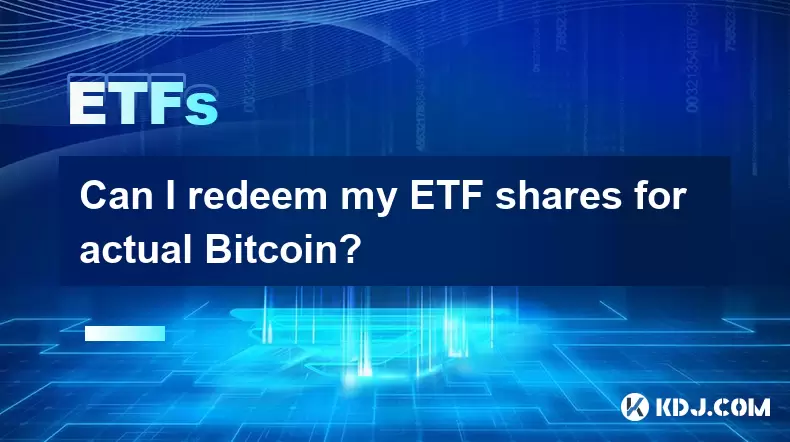-
 Bitcoin
Bitcoin $113700
0.66% -
 Ethereum
Ethereum $3471
-0.04% -
 XRP
XRP $2.885
-0.16% -
 Tether USDt
Tether USDt $1.000
0.05% -
 BNB
BNB $747.8
-0.10% -
 Solana
Solana $161.1
-0.98% -
 USDC
USDC $1.000
0.02% -
 TRON
TRON $0.3255
-0.22% -
 Dogecoin
Dogecoin $0.1980
1.46% -
 Cardano
Cardano $0.7237
2.87% -
 Hyperliquid
Hyperliquid $37.79
0.87% -
 Stellar
Stellar $0.3941
5.48% -
 Sui
Sui $3.422
1.35% -
 Chainlink
Chainlink $16.14
1.97% -
 Bitcoin Cash
Bitcoin Cash $540.7
1.55% -
 Hedera
Hedera $0.2432
4.26% -
 Ethena USDe
Ethena USDe $1.001
0.04% -
 Avalanche
Avalanche $21.31
-0.06% -
 Toncoin
Toncoin $3.624
1.19% -
 Litecoin
Litecoin $109.0
0.76% -
 UNUS SED LEO
UNUS SED LEO $8.967
0.09% -
 Shiba Inu
Shiba Inu $0.00001217
1.84% -
 Polkadot
Polkadot $3.584
1.85% -
 Uniswap
Uniswap $9.123
2.03% -
 Monero
Monero $294.7
0.87% -
 Dai
Dai $0.0000
0.01% -
 Bitget Token
Bitget Token $4.322
0.60% -
 Pepe
Pepe $0.00001048
2.65% -
 Cronos
Cronos $0.1329
2.05% -
 Aave
Aave $257.0
1.88%
What is the regulatory environment for Bitcoin ETFs?
Global Bitcoin ETF regulation varies widely; concerns over market manipulation and investor protection drive stringent US oversight, contrasting with Canada's earlier approvals, while Europe's MiCA aims for future harmonization.
Feb 27, 2025 at 04:30 am

What is the Regulatory Environment for Bitcoin ETFs?
Key Points:
- The regulatory landscape for Bitcoin ETFs is complex and varies significantly across jurisdictions. The primary hurdle is the lack of a clear regulatory framework specifically designed for these instruments.
- Securities regulators globally grapple with concerns surrounding market manipulation, investor protection, and the inherent volatility of Bitcoin.
- Different regulatory bodies have distinct approaches, resulting in a patchwork of approvals and rejections. Some countries are more receptive than others, leading to a fragmented global market.
- The ongoing debate centers on the suitability of Bitcoin as an underlying asset for an ETF, the need for robust surveillance mechanisms, and the overall systemic risk associated with Bitcoin's integration into traditional financial markets.
- Future developments in the regulatory environment will significantly impact the accessibility and growth of Bitcoin ETFs.
The Regulatory Environment for Bitcoin ETFs: A Detailed Analysis
The regulatory environment surrounding Bitcoin Exchange-Traded Funds (ETFs) is a dynamic and intricate landscape shaped by a multitude of factors. Understanding this environment is crucial for investors, issuers, and regulators alike. The core challenge lies in reconciling the inherent characteristics of Bitcoin – a decentralized, volatile, and relatively unregulated asset – with the established regulatory frameworks designed for traditional securities.
- United States: The Securities and Exchange Commission (SEC) in the United States has been the focal point of much of the global discussion regarding Bitcoin ETFs. Their primary concerns revolve around market manipulation and investor protection. The SEC has consistently emphasized the need for robust anti-fraud mechanisms and sufficient surveillance to prevent price manipulation and ensure the integrity of the market. They have historically rejected several Bitcoin ETF applications, citing concerns about the lack of sufficient safeguards against manipulation in the underlying Bitcoin market and the potential for fraud. The SEC's rigorous approach reflects their commitment to protecting investors from potentially high-risk investments. This scrutiny involves a detailed examination of the proposed ETF's structure, the chosen Bitcoin custodian, the surveillance-sharing agreements, and the overall risk management framework. The extensive review process reflects the SEC's cautious approach to integrating cryptocurrencies into the regulated securities market. The SEC’s reluctance to approve Bitcoin ETFs is not necessarily a rejection of Bitcoin itself, but rather a reflection of their mandate to protect investors and maintain market integrity. The SEC requires demonstrable evidence of robust measures to mitigate risks before approving any Bitcoin ETF application. The ongoing debate focuses on the feasibility of establishing a sufficient regulatory framework for an asset that inherently operates outside of traditional financial systems.
- Canada: In contrast to the US, Canada has shown a more receptive approach to Bitcoin ETFs. The Ontario Securities Commission (OSC), alongside other Canadian regulatory bodies, approved the first Bitcoin ETF in 2021. This approval reflects a different risk tolerance and a potentially less stringent regulatory framework compared to the US. The Canadian regulators focused on ensuring the ETF's compliance with existing securities regulations, including aspects like disclosure requirements, custodian oversight, and the prevention of market manipulation. The Canadian experience demonstrates that a different regulatory approach can lead to a quicker and more successful integration of Bitcoin ETFs into the market. However, this doesn't imply a lack of oversight; Canadian regulators continue to monitor the performance and trading of these ETFs closely, ensuring compliance with their regulations. The differences between the Canadian and US approaches highlight the diverse interpretations and applications of regulatory frameworks across different jurisdictions.
- Europe: The regulatory landscape in Europe is fragmented, with different member states having their own approaches to regulating crypto assets. The European Union is working towards a comprehensive regulatory framework for crypto assets, known as the Markets in Crypto-Assets (MiCA) regulation. MiCA aims to create a unified regulatory environment across the EU, but its full implementation will take time. Until then, individual member states continue to navigate the regulatory challenges of Bitcoin ETFs on a case-by-case basis. This fragmented approach creates inconsistencies and challenges for cross-border trading and investment. The implementation of MiCA is expected to provide a more harmonized and comprehensive framework for regulating Bitcoin ETFs within the EU, but the details of its implementation will be crucial in shaping the future regulatory environment. The complexities of harmonizing diverse national approaches to a unified regulatory framework are significant and present both opportunities and challenges for the development of a robust market for Bitcoin ETFs in Europe.
- Other Jurisdictions: Numerous other jurisdictions are actively exploring the regulatory aspects of Bitcoin ETFs. Some countries are adopting a wait-and-see approach, observing the developments in major markets like the US and Canada before establishing their own regulatory frameworks. Others are proactively developing their own regulations, reflecting their unique economic and political contexts. This global patchwork of regulatory approaches creates both opportunities and challenges for the development of a truly global market for Bitcoin ETFs. The diversity of regulatory approaches underscores the complexities inherent in regulating a decentralized, global asset like Bitcoin within the traditional framework of national securities regulations. The international coordination and cooperation among regulators will be critical in establishing a globally consistent and effective regulatory environment for Bitcoin ETFs.
Challenges and Considerations: Several key challenges remain in the regulatory environment for Bitcoin ETFs. These include:
- Market Manipulation: The decentralized nature of Bitcoin makes it susceptible to manipulation, particularly through wash trading or spoofing. Regulators are particularly concerned about the potential for such activities to influence the price of Bitcoin and thus the value of the ETF. Robust surveillance mechanisms and stringent enforcement are essential to mitigate this risk.
- Custody and Security: The safekeeping of Bitcoin underlying the ETF is paramount. Regulators require assurances that the custodian has the necessary security measures in place to protect the assets from theft or loss. This includes considerations of both physical and cyber security.
- Valuation: Accurately valuing Bitcoin, especially in a volatile market, is another challenge. Regulators need to ensure that the ETF's net asset value (NAV) accurately reflects the value of the underlying Bitcoin holdings.
- Investor Protection: Regulators must ensure that investors understand the risks associated with investing in Bitcoin ETFs. This includes providing clear and concise disclosures about the potential for significant price volatility and the lack of regulatory protection compared to traditional securities.
FAQs:
Q: What are the main concerns of regulators regarding Bitcoin ETFs?
A: Regulators are primarily concerned about market manipulation, investor protection, and the inherent volatility of Bitcoin. They need assurance that sufficient safeguards are in place to prevent fraud and ensure the integrity of the market.
Q: Why has the SEC been hesitant to approve Bitcoin ETFs?
A: The SEC has historically expressed concerns about the lack of sufficient safeguards against market manipulation in the underlying Bitcoin market and the potential for fraud. They require robust anti-fraud mechanisms and surveillance to protect investors.
Q: What are the key differences in the regulatory approaches of the US and Canada regarding Bitcoin ETFs?
A: Canada has been more receptive to Bitcoin ETFs than the US, approving the first Bitcoin ETF in 2021. This reflects a potentially less stringent regulatory framework and different risk tolerance compared to the US's more cautious approach.
Q: What is MiCA and how will it impact the regulatory environment for Bitcoin ETFs in Europe?
A: MiCA (Markets in Crypto-Assets) is a comprehensive regulatory framework being developed by the European Union for crypto assets. Its implementation will aim to create a unified regulatory environment across the EU, potentially leading to a more harmonized market for Bitcoin ETFs.
Q: What are the key challenges in regulating Bitcoin ETFs globally?
A: Key challenges include preventing market manipulation, ensuring secure custody of Bitcoin, accurately valuing Bitcoin, and providing sufficient investor protection in a volatile and relatively unregulated market. International cooperation among regulators will be crucial in addressing these challenges.
Disclaimer:info@kdj.com
The information provided is not trading advice. kdj.com does not assume any responsibility for any investments made based on the information provided in this article. Cryptocurrencies are highly volatile and it is highly recommended that you invest with caution after thorough research!
If you believe that the content used on this website infringes your copyright, please contact us immediately (info@kdj.com) and we will delete it promptly.
- Navigating the Meme Coin Mania: Cold Wallets, SHIB, and DOGE in 2025
- 2025-08-03 22:30:16
- Bitcoin's Price Fall and Scrutiny: What's a New Yorker to Think?
- 2025-08-03 22:30:16
- Shiba Inu's Resistance and Recovery Push: What's Next for SHIB?
- 2025-08-03 22:50:16
- Bitcoin, Hashcash, and Crypto Innovation: A Look at the Foundation and Future
- 2025-08-03 23:12:53
- Meme Coin Mania: Bonk, Pudgy Penguins, and the Quest for the Next Crypto Sensation
- 2025-08-03 22:50:16
- Binance Coin's Bull Run: Chain Upgrades, Token Burns, and the Road to $1000
- 2025-08-03 23:15:31
Related knowledge

What is the best platform to trade Bitcoin ETFs?
Jul 23,2025 at 04:14am
Understanding Bitcoin ETFs and Their Role in TradingBitcoin Exchange-Traded Funds (ETFs) have gained significant traction among traditional and crypto...

What is the best platform to trade Bitcoin ETFs?
Jul 17,2025 at 03:50pm
Understanding Bitcoin ETFs and Their Role in the MarketBitcoin Exchange-Traded Funds (ETFs) are investment vehicles that track the price of Bitcoin wi...

Will a Bitcoin ETF be available in my 401(k)?
Jul 17,2025 at 10:42pm
What is a Bitcoin ETF?A Bitcoin ETF (Exchange-Traded Fund) is an investment vehicle that tracks the price of Bitcoin without requiring investors to di...

Who is the authorized participant for a Bitcoin ETF?
Jul 18,2025 at 12:42am
Understanding the Role of Authorized Participants in Bitcoin ETFsIn the context of Bitcoin Exchange-Traded Funds (ETFs), an authorized participant (AP...

Is the Bitcoin ETF a bubble?
Jul 20,2025 at 06:57am
Understanding the Bitcoin ETF ConceptA Bitcoin Exchange-Traded Fund (ETF) is a financial product that aims to track the price of Bitcoin without requi...

Can I redeem my ETF shares for actual Bitcoin?
Jul 17,2025 at 03:14pm
Understanding ETF Shares and Their Relation to BitcoinExchange-Traded Funds (ETFs) have become a popular investment vehicle for those looking to gain ...

What is the best platform to trade Bitcoin ETFs?
Jul 23,2025 at 04:14am
Understanding Bitcoin ETFs and Their Role in TradingBitcoin Exchange-Traded Funds (ETFs) have gained significant traction among traditional and crypto...

What is the best platform to trade Bitcoin ETFs?
Jul 17,2025 at 03:50pm
Understanding Bitcoin ETFs and Their Role in the MarketBitcoin Exchange-Traded Funds (ETFs) are investment vehicles that track the price of Bitcoin wi...

Will a Bitcoin ETF be available in my 401(k)?
Jul 17,2025 at 10:42pm
What is a Bitcoin ETF?A Bitcoin ETF (Exchange-Traded Fund) is an investment vehicle that tracks the price of Bitcoin without requiring investors to di...

Who is the authorized participant for a Bitcoin ETF?
Jul 18,2025 at 12:42am
Understanding the Role of Authorized Participants in Bitcoin ETFsIn the context of Bitcoin Exchange-Traded Funds (ETFs), an authorized participant (AP...

Is the Bitcoin ETF a bubble?
Jul 20,2025 at 06:57am
Understanding the Bitcoin ETF ConceptA Bitcoin Exchange-Traded Fund (ETF) is a financial product that aims to track the price of Bitcoin without requi...

Can I redeem my ETF shares for actual Bitcoin?
Jul 17,2025 at 03:14pm
Understanding ETF Shares and Their Relation to BitcoinExchange-Traded Funds (ETFs) have become a popular investment vehicle for those looking to gain ...
See all articles

























































































